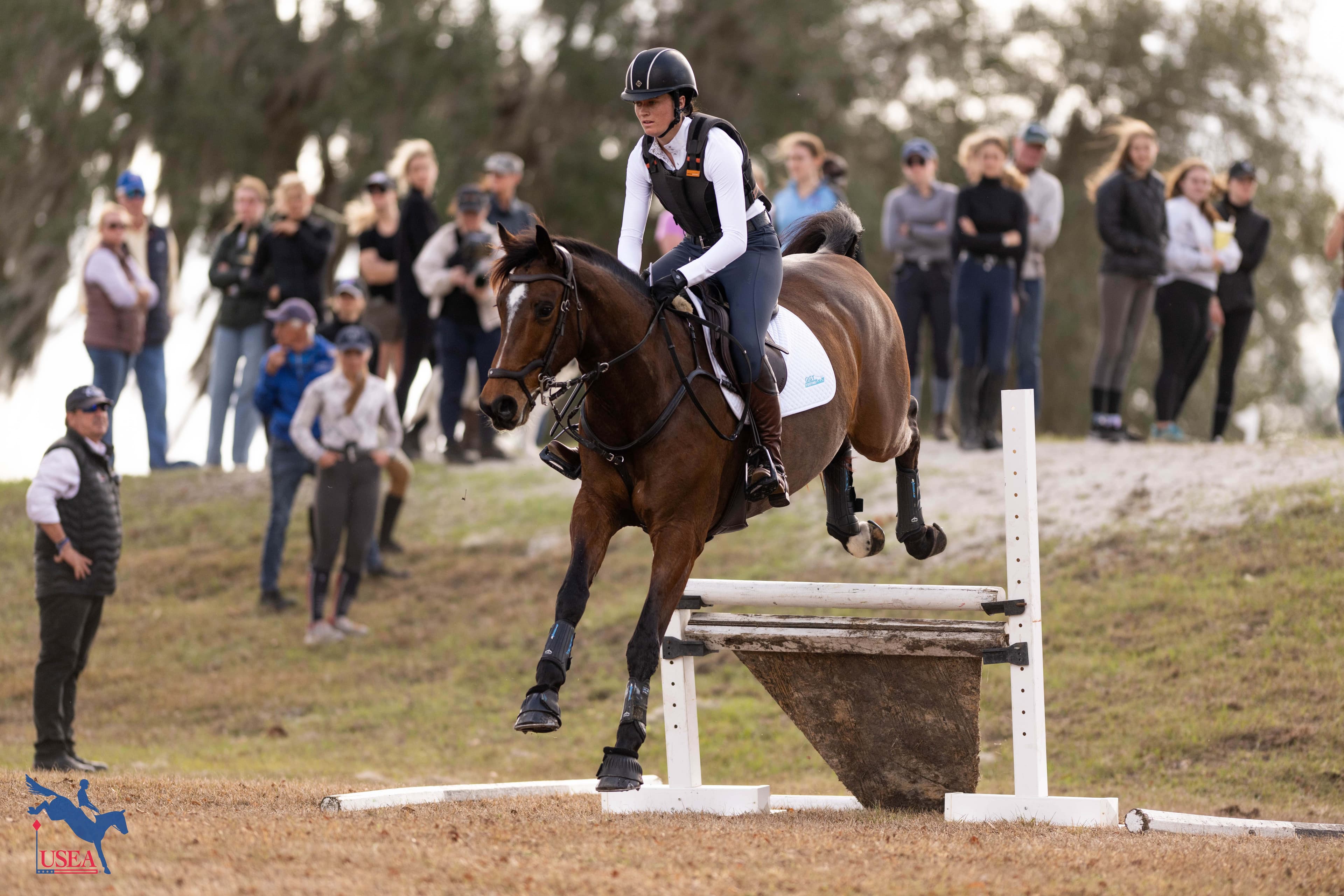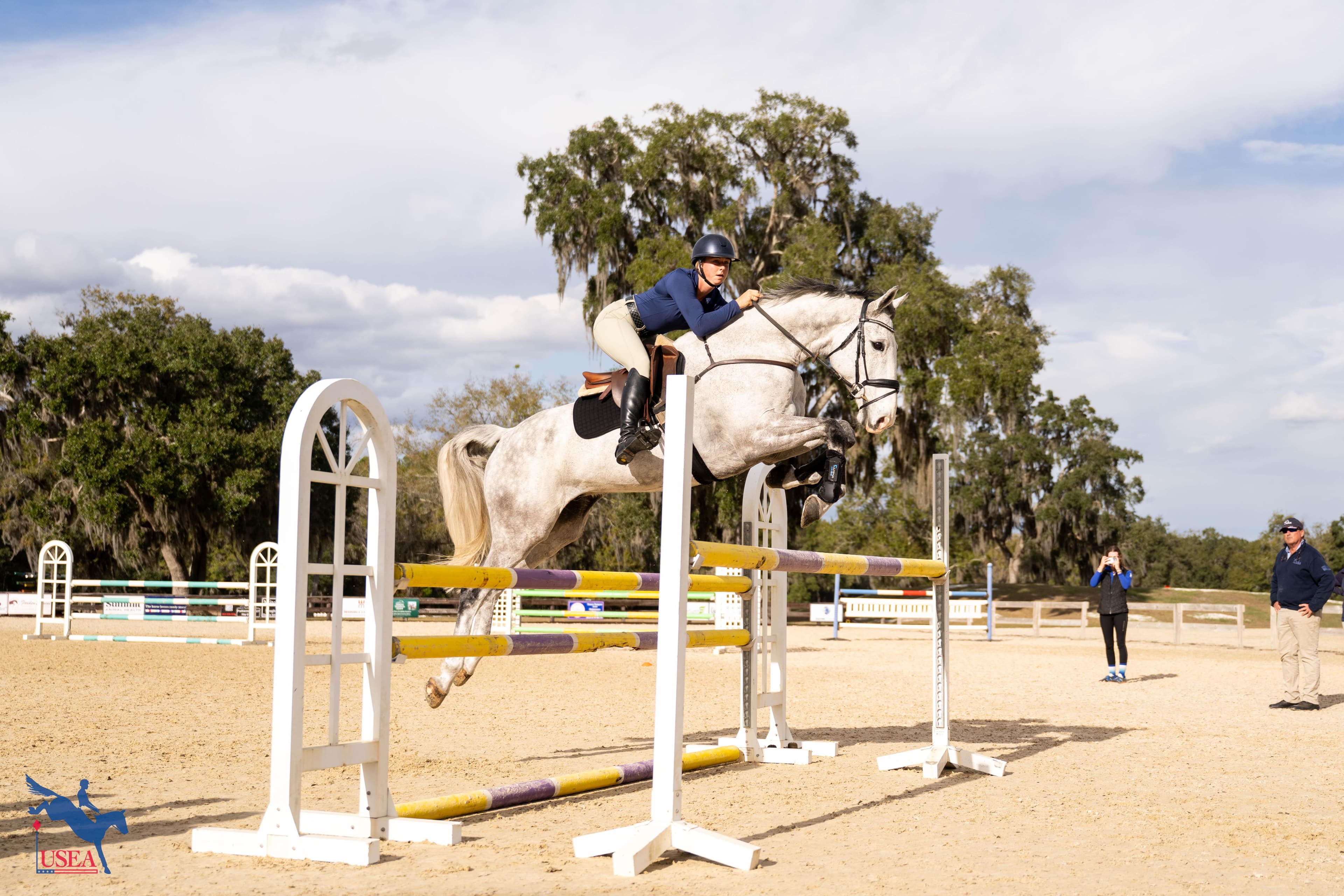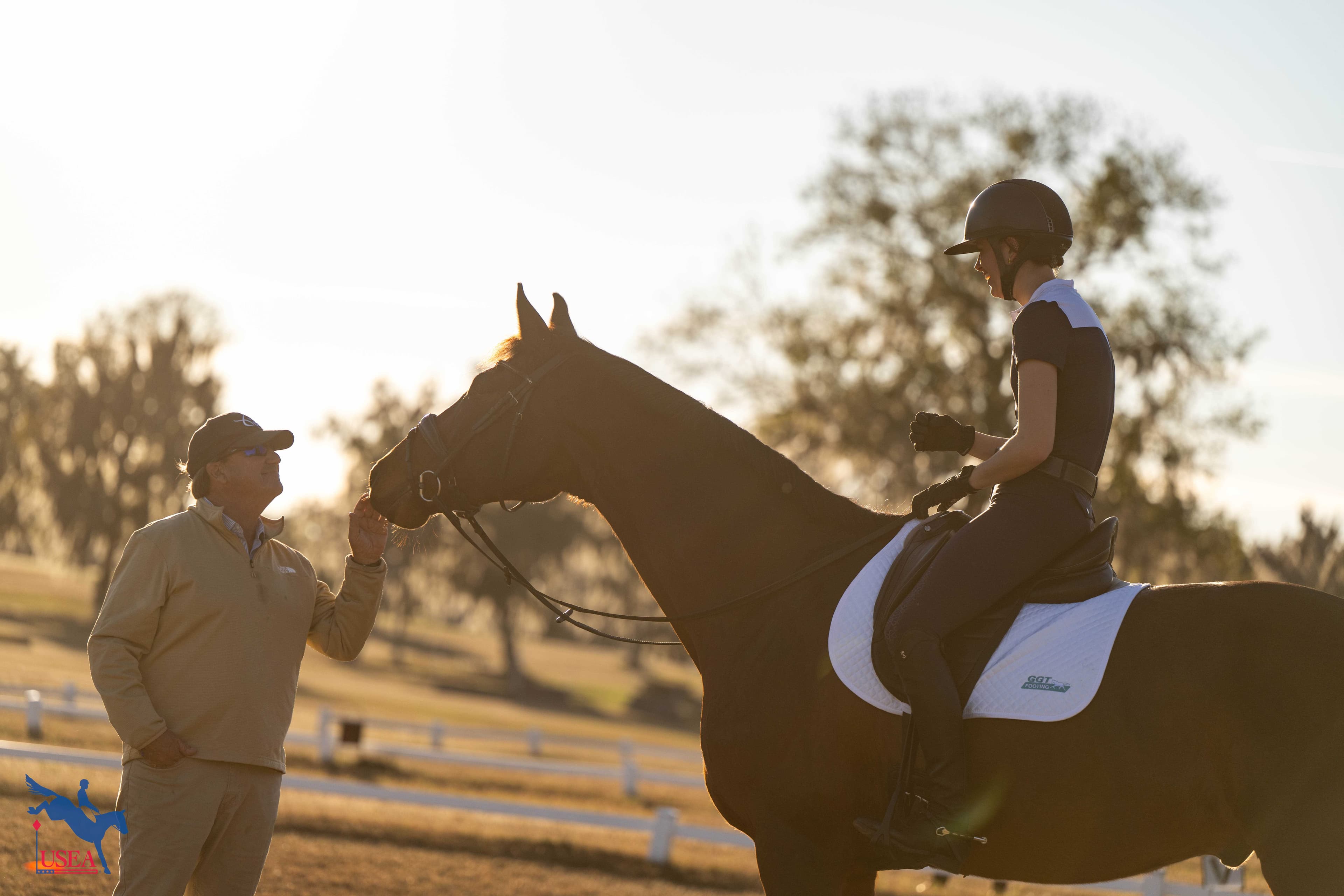Giving Your Future Event Horse the Right Start, Part Two
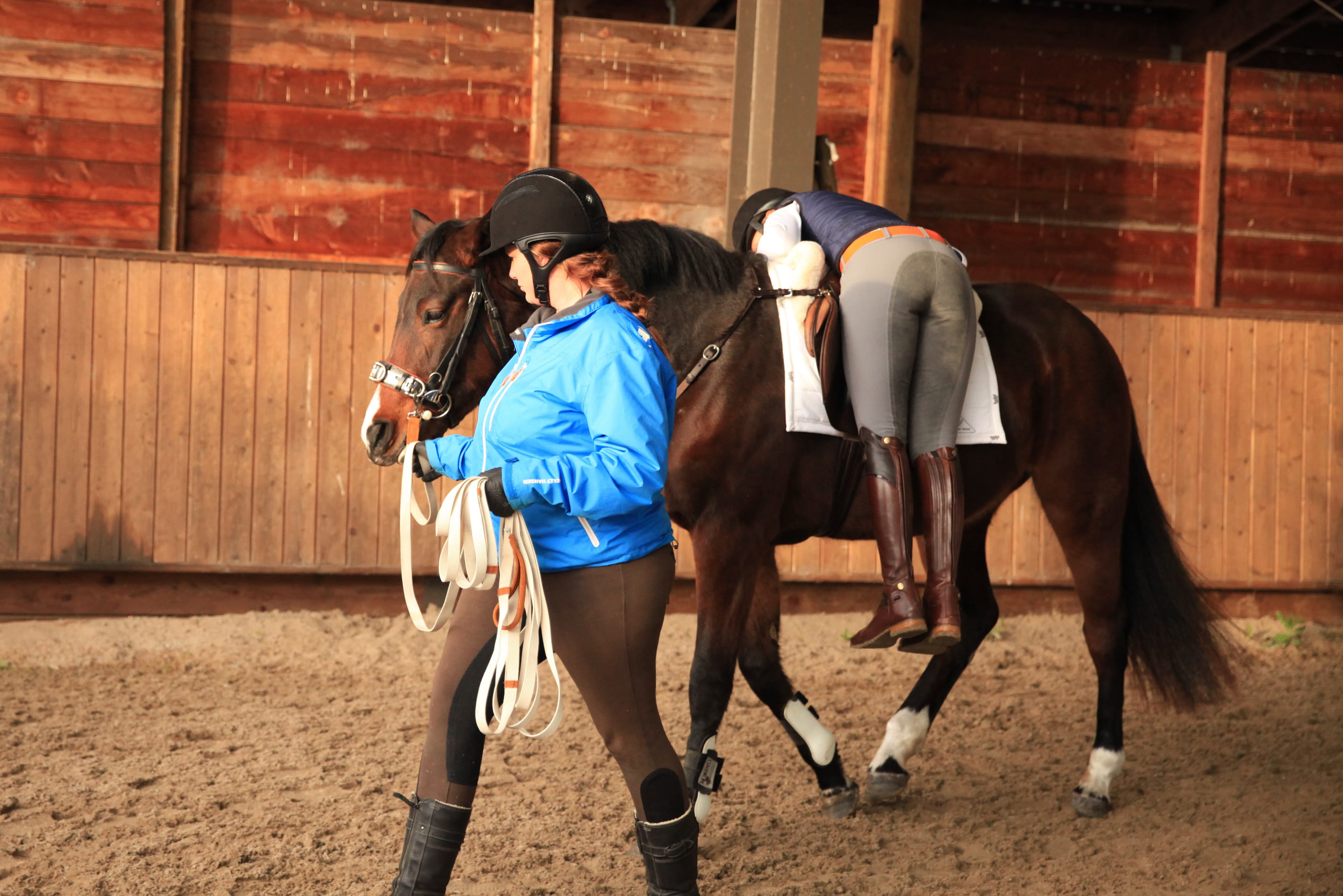
This article originally appeared in the May/June 2018 issue of Eventing USA magazine and has been split into two parts for publication on the USEA website. Click here to read part one.
Typically at the end of a lunge session, when the horse has settled, is an ideal time to introduce the surcingle or saddle in the middle of the round pen. The pressure of the girth and something tied around his body is what causes a horse to react. Some professionals use western saddles as they like having the horn when riding and feel the heavier weight of that type of saddle is beneficial. One drawback of using a western saddle is that the stirrups are often low enough that a horse can hook a back foot into a stirrup if the horse kicks at it. My preference is a lightweight jumping saddle without the stirrups attached at first. Later the stirrups can be reattached and allowed to hang down to assist in sacking out. For safety reasons, adjust the stirrups to hang only as low as the bottom of the saddle flap. It is very important to check saddle fit, especially to ensure your young horse has a positive first experience. Using a breastplate will ensure that the saddle isn’t able to slide back. Fully tightening the girth the first few times wearing a saddle on a young horse is a gradual process. A potentially dangerous situation can be created should the saddle slide back on the horse.
As the young horse progresses towards being ridden, adequate time should be spent training the horse to stand quietly at the mounting block. Slowly wave your hands and arms over the horse’s head so he gets used to seeing something moving above him. Before riding in an upright position, a rider can lay across the saddle as a safe method to get a horse used to weight on his back. This requires a handler on the ground and a rider draped over the saddle. The handler then leads the horse slowly at the walk, paying close attention to the horse’s reaction. Especially using the lunge cavesson or rope halter over the bridle is helpful for the handler to keep control. It gives the handler a lead rope or lunge line to hold, and thus eliminates tugging on the reins and bit. The rider will hang off on the inside of the round pen so they aren’t trapped next to the fence or wall. In this position, if the rider needs to make an emergency dismount, it’s easy to slide off and push clear of the horse should the horse have an adverse reaction to the added weight.
Educating the Mounted Horse About the Meaning of the Rider’s Aids
After the horse is comfortable walking with weight on his back, the rider sits upright in the saddle while still being led. Leg pressure is introduced to ask the horse to move forward with the use of the learned voice commands or a gentle tap of the whip that has already been introduced. The handler on the ground can give a gentle pull on the lead if the horse doesn’t understand. In time, the horse should move forward from the leg without the assistance of the handler on the ground. Slowly the lunging position that is already familiar to the horse can be assumed to introduce the other gaits. The line is taken off to practice making turns through the middle of the round pen.
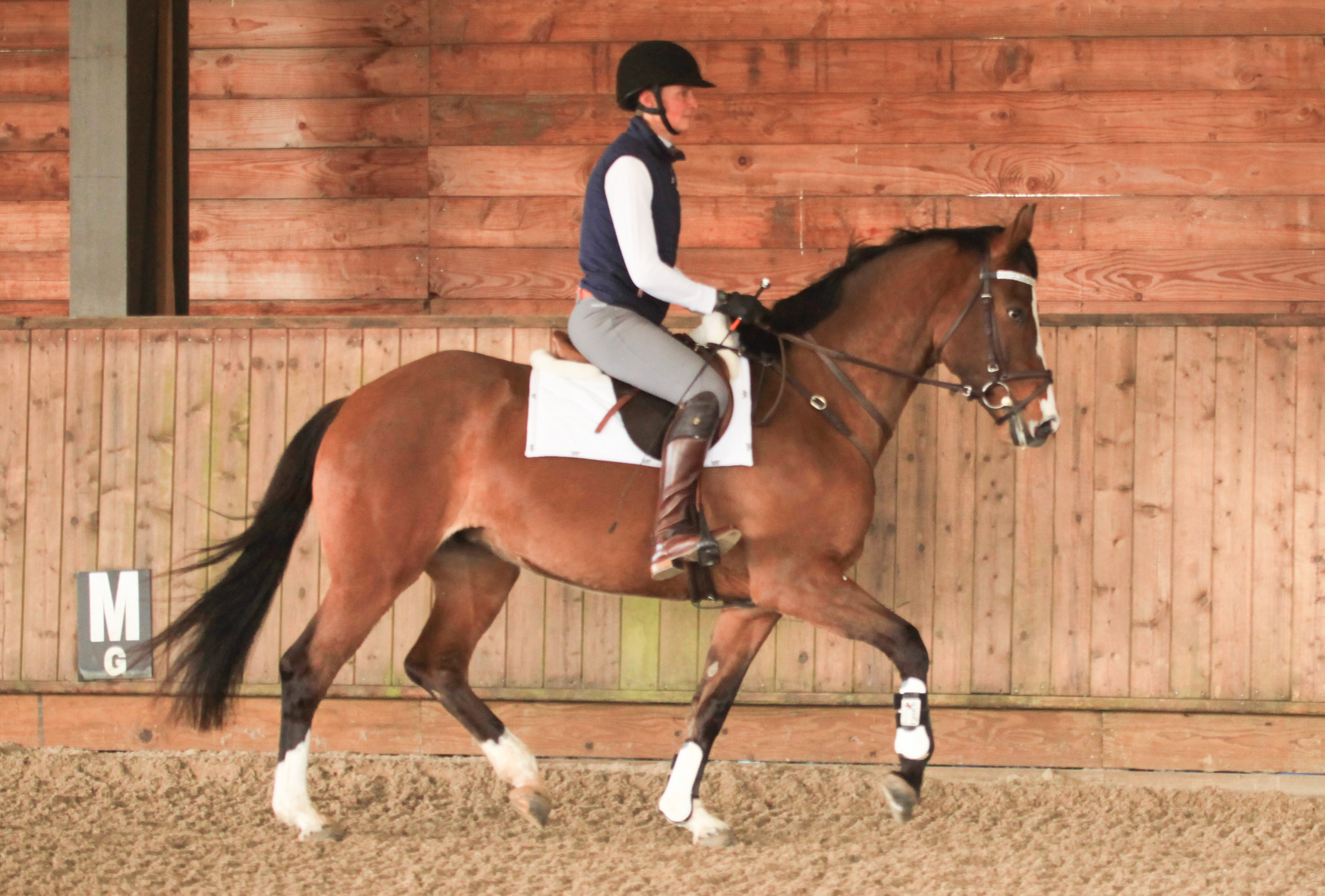
At this stage, the young horse should be ridden in his natural balance with his head up and nose out as he would travel on his own (pictured above). Envision a lovely working hunter with a long top line, neck low, with the poll slightly the highest point and a relaxed and sweeping stride as the starting point (pictured below). Strength, connection, and carriage are developed over time to create a more elevated outline. Transition to riding in a new space – preferably still fenced or enclosed for safety. Remember to create another safe zone by familiarizing the horse in one area. Then slowly expand the area until the horse is being ridden around the entire arena.

Once young horses can walk, trot, and canter under saddle through an arena, their bodies and minds will be ready for a rest. I prefer to turn them back out in a pasture for a month or two. When bringing a young horse back in from the field to continue his education, a common misunderstanding is that the horse is ready for anyone to ride. These horses are still exceptionally green and unconfirmed in their education. It is beneficial to work closely with a professional after backing so that professional can help assess when your young horse is ready to be ridden by an amateur rider.
Typically during the summer months I start young horses back up again. Short rides or hacking three days a week is ideal to familiarize horses to new places and slowly build strength. I prefer to continue using a short amount of lunge work to continue introducing connection. Under saddle the connection is never forced, but is encouraged if the young horse will offer it. It’s often a good time to casually introduce them to basic cross-country obstacles such as water, a small ditch, and banks. Wait until your young horse is at least 4 years of age to start jumping under saddle so his body is more mature and can handle the impact. During the late summer or fall, he might be ready to attend a local schooling show or USEA Young Event Horse competition. Just attending without showing is also a valuable experience.
The backing/breaking process should be done systematically, always creating a safe, confident zone for a young horse. The goal is to avoid any possible outbursts from anxiety if done correctly. Pay close attention to signs of stress. Some horses can develop stomach ulcers from the dramatic change in their daily life. Consider moving more slowly through the process or even giving them a short break if signs of physical or mental stress are present. Some training issues can be created during the breaking process that can continue through a horse’s career. It is important that you make an educated choice about the professional you hire to start your young horse. It’s always an exciting moment to see your Future Event Horse transition to a Young Event Horse under saddle!
About Sarah Lorenz
Sarah Lorenz has been specializing in starting young horses for almost 20 years in eventing and runs her business Stone’s Throw Farmin Eugene, Oregon. She also breeds Holsteiner/Thorougbred crosses purpose-bred for eventing. Lorenz has ridden through the Advanced level, has a graduate “A” Pony Club rating, and is a USEA Level II ICP Certified Instructor. She is currently an Area VII Young Rider team selector and working towards the new ICP Young Event Horse Professional Horse Trainer certification.
Did you enjoy this article? Want to receive Eventing USA straight to your mailbox? Members receive Eventing USA as part of their USEA Membership or you can purchase individual issues from the USEA Shop.

